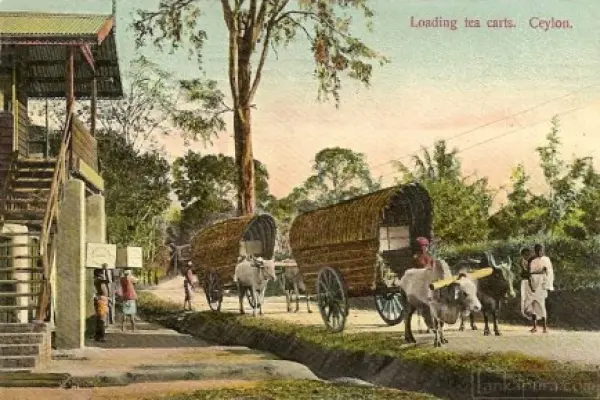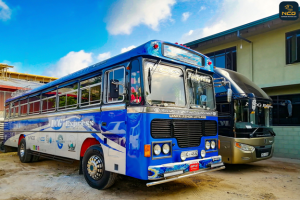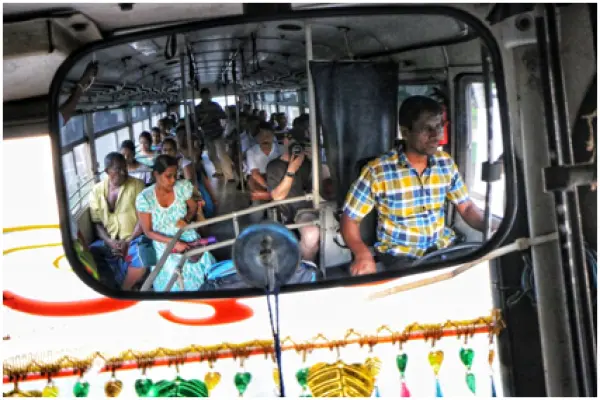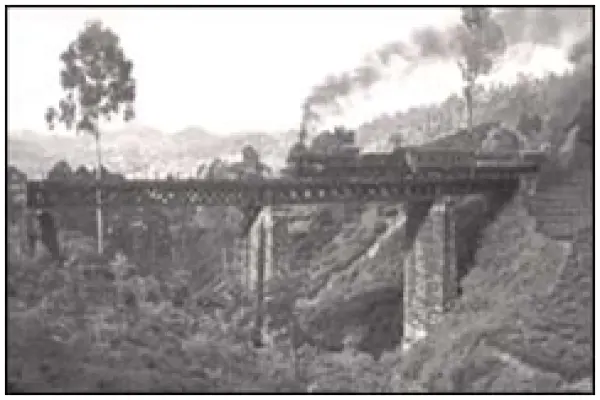Blog Details
10 Oct 2022 A Brief History of Colonial Era Public Transport - Part I

Photo of 1880s Pettah showing bullock carts and horse-driven carriages (source)
Transport is a huge part of human evolution, from traveling by foot to electric cars, our collective transport history has improved immensely. Sri Lanka’s colonial history played a major part in improving the existing travel systems and networks to what it is today.
Let’s take a quick look back at Sri Lanka’s (Ceylon) transport history.
Ancestral Routes to Modern Transport
Since before Ceylon’s (modern-day Sri Lanka) colonial history, the island had its own transport and travel systems in place. From the ancient Mahamaga (Highway) to cattle-driven bullock carts and elephant-driven carriages, the islanders managed to get from point A to point B. When foreign colonial powers entered the island other alternate modes of transport were introduced through the years, and to this day are still in use.
Transport used by the Ceylonese
Long before colonial interventions, Ceylonese folk had their own ‘roads’ that allowed them to get from one place to the other. What Ceylonese used by way of roads were mostly clearings through jungles and winding foot-worn paths. Most traveling was by foot with occasional resting points along the way, later opting for cattle-driven carts.
Modes of transport used by the Ceylonese during the 1800s:
Modes of transport used by the Ceylonese during the 1800s:
Palanquins (reserved for nobility)

Rickshaw

Horse-driven carriages (mostly used by people of a higher caste and government officials).

Bullock-driven carts

Elephant-driven carts

By foot
Colonial Improvements
When the British arrived their main priority was on ‘military roads’ that led from one fort/fortress to the other. Most troops traveled by foot and existing clearings used by the locals were widened to facilitate the large armies of the British.
As the British got familiar with the terrain of the island nation, their interests changed from military to cultivation. Ceylon was ideal for their main export crops coffee and tea, they quickly realised a proper transport system was crucial. Hence, ‘Cart roads’ were implemented specifically to transport coffee and tea from their factories to harbours, from where the products will be shipped across the globe and especially back home to England.
As the British got familiar with the terrain of the island nation, their interests changed from military to cultivation. Ceylon was ideal for their main export crops coffee and tea, they quickly realised a proper transport system was crucial. Hence, ‘Cart roads’ were implemented specifically to transport coffee and tea from their factories to harbours, from where the products will be shipped across the globe and especially back home to England.

Colourised photo of tea being loaded into carts in 1911. (source)
Kandy was a major base of operations for the British as most of their coffee and tea crops were cultivated there. This led to the construction of the first highway in Sri Lanka to enable quick coffee/tea transportation. The Colombo-Kandy highway, AKA A1, began construction in 1820 under the orders of then Governor of Ceylon, Sir Robert Wilmot-Horton.



A 1900s photo of the Kadugannawa Station along the A1 route (left) and ‘Galaviduputena’ (where the rock was pierced) the Kadugannawa tunnel, a construction marvel engineered by Captain William Francis Dawson in 1820, photo taken in 1880. The Kadugannawa tunnel today (bottom left). (source, source, source)
Bullock carts full of produce/goods would use these roads to travel from the outskirts of the country to Colombo, which was the major export hub at the time. The A1 route is a major highway used by travelers even today.
Beginning of the Train and Bus eras
In 1864, the railroad was introduced to Ceylon, this was a major transportation advancement for the tiny nation. Trains were used to transport tea (as by this time coffee crops were affected by the ‘great coffee blight’) from factories to Colombo, and major harbours, the railroad was also adapted as a cheap way of transport for the locals.
In 1907, the first bus service was introduced to Ceylon, a private bus running from Chilaw to Colombo. This was replaced with the first nationalized bus in 1958 by the CTB (Ceylon Transport Board).
In 1907, the first bus service was introduced to Ceylon, a private bus running from Chilaw to Colombo. This was replaced with the first nationalized bus in 1958 by the CTB (Ceylon Transport Board).

The Colombo and Kandy main rail line in 1880 Ceylon. (source)
We discuss more on trains and buses of Sri Lanka here.
References
https://thuppahis.com/2021/11/01/the-development-of-transportation-in-ceylon-1800-1947/
https://transport.gov.lk/web/index.php?option=com_content&view=article&id=7&Itemid=119&lang=en
https://www.sltb.lk/history.html
http://www.railway.gov.lk/web/index.php?option=com_content&view=article&id=137&Itemid=181&lang=en
https://lankainformation.lk/directory/general-information/history/9489-first-nationalized-bus-1958-sri-lanka
https://www.classicbuses.co.uk/lanka.html
http://www.bokhans.com/bussar.html
http://www.bokhans.com/trollybus.html
https://lankapura.com/2008/10/mountain-road-near-haputale-ceylon-1894/
https://transport.gov.lk/web/index.php?option=com_content&view=article&id=7&Itemid=119&lang=en
https://www.sltb.lk/history.html
http://www.railway.gov.lk/web/index.php?option=com_content&view=article&id=137&Itemid=181&lang=en
https://lankainformation.lk/directory/general-information/history/9489-first-nationalized-bus-1958-sri-lanka
https://www.classicbuses.co.uk/lanka.html
http://www.bokhans.com/bussar.html
http://www.bokhans.com/trollybus.html
https://lankapura.com/2008/10/mountain-road-near-haputale-ceylon-1894/



